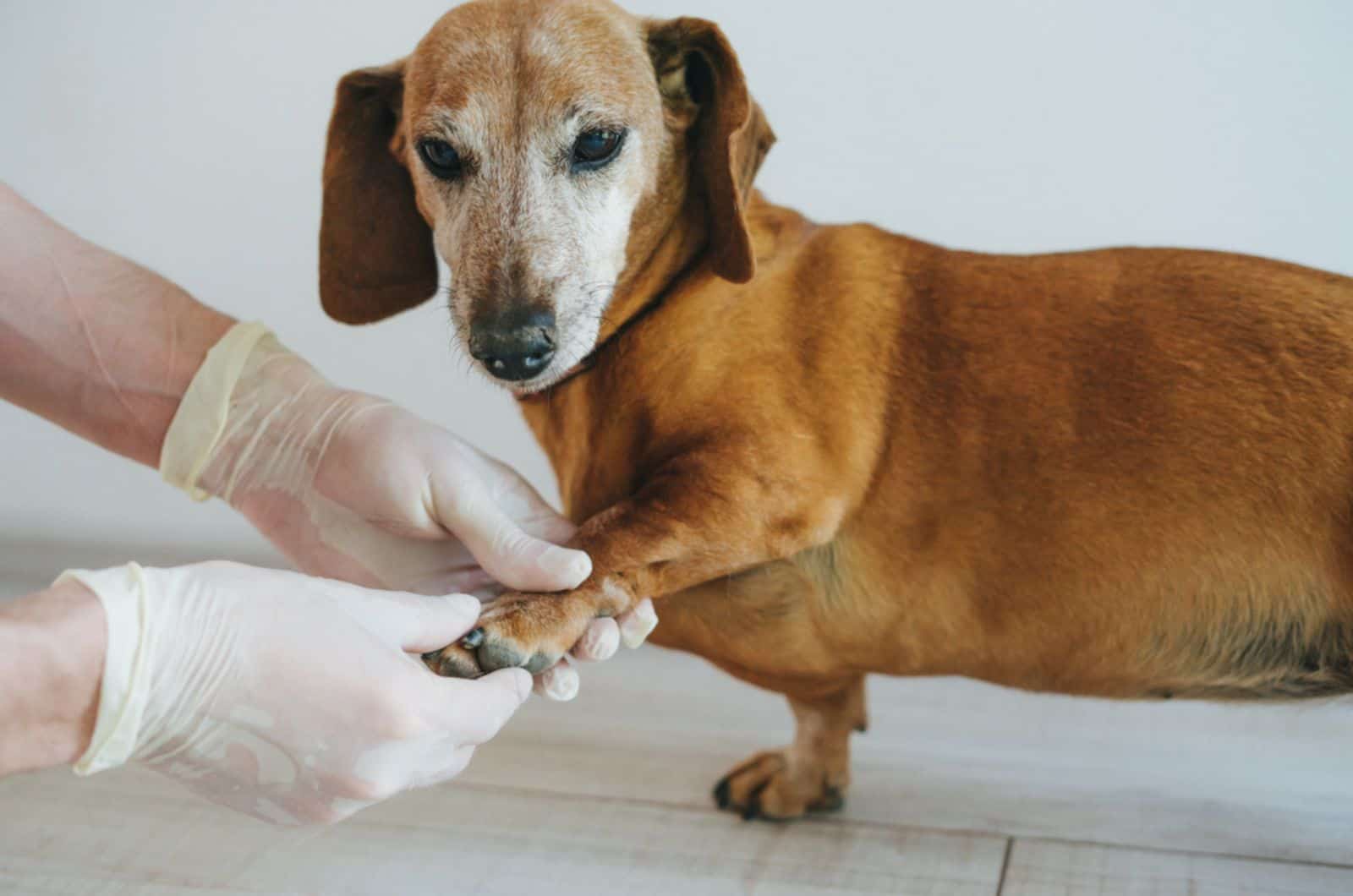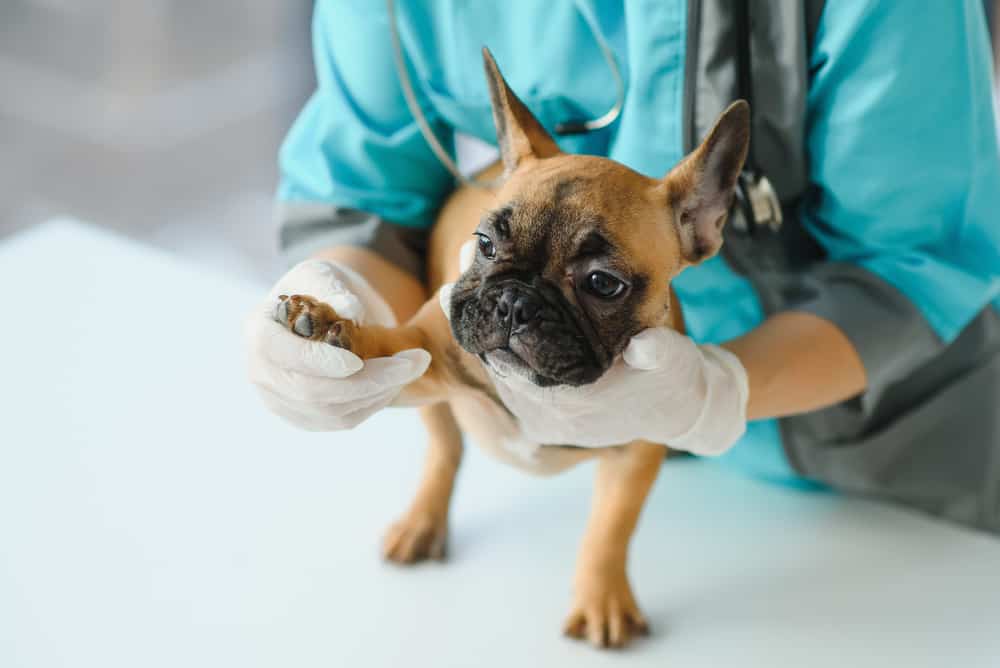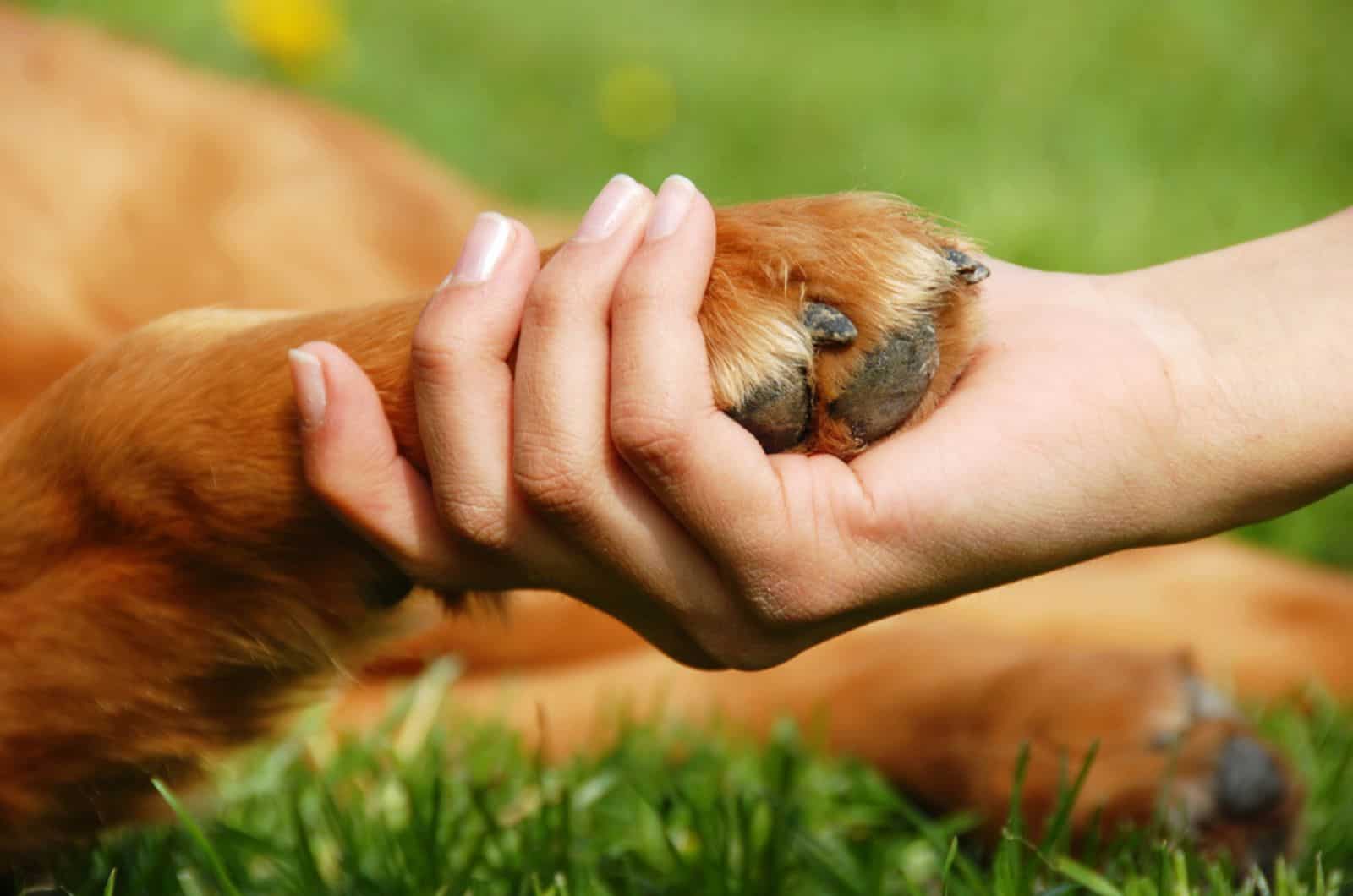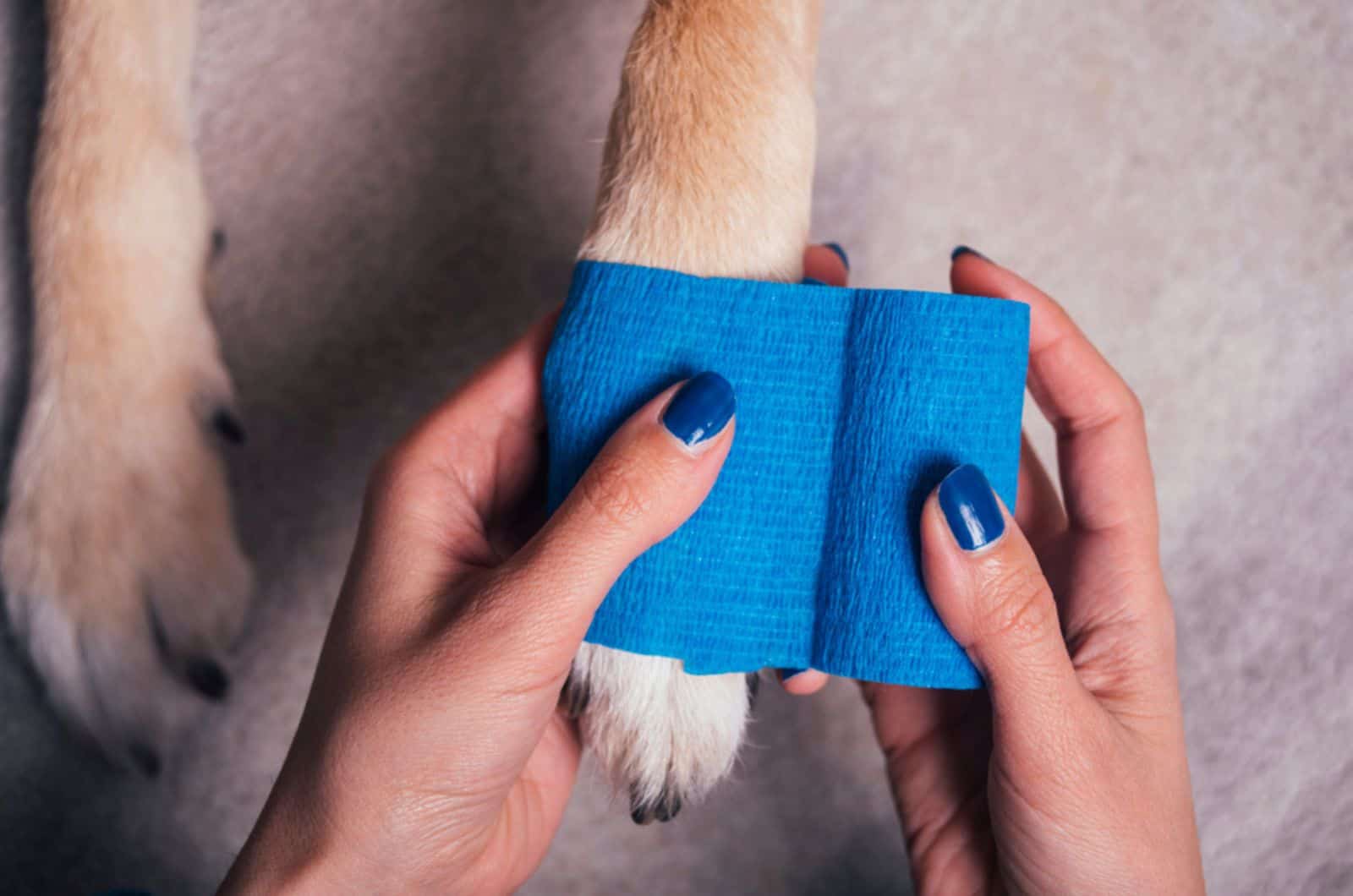We only want to boop the nose and touch those toe beans. They are adorable, and they need to be booped. But something can happen to the toe beans. What to do? How did it happen?
Unfortunately, there are many ways a doggo can injure its pads. Or not just injure the pads but have various health issues as well. One of those health problems is dog paw pad peeling.
I don’t know whether you think the condition sounds serious or not, but it is an issue that needs to be resolved. Because even if it’s not a serious threat to a dog’s health — it might become serious over time.
It can get complicated, a secondary infection might occur; the pain can get a serious problem for a dog, and it might start limping, stopping it from doing everyday activities, etc.
So, it’s better to be safe than sorry when it concerns our furry friends. If you notice your dog’s paw pad started to peel, it is time to take a look at five reasons why it happened. And, while you’re here — you can take a look at five solutions right away.
Dog Paw Pad Peeling Explained

Dogs have pads on all four paws. They are like cushions making walking, running, and jumping go smoothly and without injuries to the rest of the body. The pads are made out of fat tissue and a type of fiber.
We’ve all seen the toe beans of little puppies. They are so soft and cute; you just want to kiss ‘em all the time! But, of course, over time, the dog pads start to have a harder outer layer. The dogs need it for protection during walking or running on rough terrain.
Running on hard surfaces is how abrasions and scrapes happen on the dog’s feet and pads. This is a normal thing, and it simply cannot be avoided. A dog needs to go on a dog walk. They need to play and run too.
So, it is normal for them to have a scrape or two while running around on rough surfaces like rocks, gravel, or something else we can find in our surroundings. But when that scrape turns into a peeling — the problem can get serious.
If it is a more serious situation, they might start acting weird all of a sudden or avoid usual activities.
What exactly happens? The outer layer of the dog’s foot pad starts to peel off. The peeled layer can be small and cause no pain or discomfort, or it can be bigger and cause pain and other consequential problems.
As a pet parent, it is our duty to check the pup’s pads and notice if our pup has a paw pad injury. If we notice the change in time, the treatment is shorter and has a better prognosis. Not to mention that a dog goes through fewer stressful situations — like going to the vet.
But what can be a cause of the problem besides a “simple” injury? What is the root cause that can affect our doggo’s pads? Well, there are five common reasons for it.
Reasons Why Dog Paw Pad Peeling Happens?

Dogs are curious creatures. They love to roam around and sniff. And they love to play! So, it is to be expected for them to get hurt sometimes. Most of the time (thank goodness), the injuries are small, and they go away quickly.
But, sometimes, an injury can be more serious, or it can become more serious if we don’t treat it on time, and dog paw pad peeling can happen. Why doesn’t it happen?
There are five most common reasons why this health issue can occur. You will see that a lot of time, it is a splinter or another foreign object that causes the problem. When and if this is the case, a dog might refuse to go on a walk or act in a similar way.
1. Foreign Objects
We will start with the most common reason — foreign bodies stuck in your dog’s paw pads or toenails or foreign objects cutting your dog’s paw pad. This is a reason that happens the most because of the usual everyday activities a dog goes through.
Dogs can walk on sharp rocks, thorns, broken glass, or anything else that is sharp enough to get stuck in a dog’s paw pad or cut it. What happens next? Well, usually, a dog will try to lick the injured region.
That is one of the first signs — a dog constantly licking its injured paw pad. It is something we will notice because it is not something the dog usually does. They do lick their paws, but not that often. It’s like seeing a dog licking another dog’s ears.
It can be normal, but it draws attention and it makes us wonder — why doggo? Why do you do that?
If the injured paw or sharp object is not resolved, then over time, dog paw pad peeling can start. The body will try to help itself in any way possible. One of the ways is trying to “remove” the foreign object by peeling the layers of the paw’s pad off.
Depending on how deep the cut is or if the injury gets infected or not, the dog paw pad peeling can go away on its own or it can grow into a secondary infection.
2. Burns

Another reason for dog paw pad peeling to start is when a dog burns its paws. This doesn’t have to happen inside the house on hot objects or hot surfaces like stoves, irons, or similar house appliances.
This happens more often outside — on hot pavement. Of course, this is not a problem if you live in colder parts of the world. But, if you live in such a climate that has a lot of scorching sunny days during the year — burns from hot pavement are common.
The body’s reaction to an external source of extreme heat that can cause burns is blisters. You must have burned your hand at least once in your lifetime. It hurts, turns red, and then turns to a blister.
What is a blister? It is how a body tries to protect itself from further damage — like infections. The burned paw pad is a perfect place for all kinds of bacteria to start their colonies and cause an infection.
So, the doggo’s body makes a blister filled with liquid to heal the wound quicker and help fight the possible infection. When the blister phase ends — the dog paw pad peeling starts. There is no need for the blister; everything has healed, so the body peels off the skin that made the walls of the blister.
A dog will try to lick the blister and the paw during the peeling period. If the burned part of the paw is not too big, there is no harm in it. But, if the burned part is big — you will have to prevent your dog from doing it.
We’ll talk about the possible solutions later in the text.
3. Irritant
Our dogs live in a world made by us — humans. We use so many different types of chemicals every day in our lives. The chemicals are in our homes and outside on our streets and sidewalks.
We might not notice them, and they might not cause us harm (most of them, at least), but dogs are much more sensitive to them. Especially their cute toe beans and paws.
One example of the irritant that can cause dog paw pad peeling is present during winter weather. When the snow falls, people use all kinds of ice-melt products to clean the roads.
These ice-melt products, as well as rock salts, can cause injuries and irritation of the dog’s paw pads. Some dogs have more sensitive paw pads than others. Generally, teacup dog breeds are more prone to irritation and injuries due to ice-melt products.
But that doesn’t mean your Great Dane can’t get its paws hurt. No matter if you are a dog owner of a small dog breed or a big dog breed — they (dogs) can all get hurt.
When an irritant breaks the skin on your dog’s paw, a dog’s body can react by peeling the injured or affected part of the pad.
Just like with the injuries, depending on the size of the affected area and the amount of the irritant — the peeling can be more or less serious. Also, the pain can be present, but it doesn’t have to be.
4. Allergies

Dogs are not as prone to allergies as people, but there is a decent amount of dogs that are allergic to various allergens.
In most cases, dogs are allergic to food or grooming products. But, an allergic reaction can happen because of other allergens as well. A cleaning product can be an allergen or a new air refresher we bought.
One of the symptoms, when a dog has an allergic reaction, can be dog paw pad peeling. Other symptoms can be vague, like your dog rubbing its face on the carpet or other surfaces, sneezing, drooling, etc.
When it happens on the paws and the paw pads, the reason is usually a contact allergy or contact dermatitis. Besides dog paw pad peeling, other symptoms can be present. For example, redness and itchiness of the paw.
5. Diseases
A lot of diseases have dog paw pad peeling as one of their many symptoms. The important thing is not to panic and think your doggo has the worst of all diseases.
In most cases, the peeling is a symptom of some kind of parasitic infestation that can be cured. It might take time, but it is absolutely curable. Sometimes, a disease is not physical but an extreme change in a dog’s behavior caused by a sudden change.
The most common psychological reason behind a dog’s paw peeling is separation anxiety. A dog will try to “calm” himself by biting its paw pads or scratching other body parts. After the biting of the paw pads, the body tries to heal itself by making fibrous tissue to cover the open wound.
That fibrous tissue or hardened paw pad eventually peels off. We have to find an underlying cause and help our doggo as soon as possible to prevent any further complications.
1. Parasites
This is one of the most common reasons behind the paw peeling problem. External parasites like fleas, ticks, and mites can cause peeling issues on your dog’s paws, as well as skin problems on other parts of the dog’s body.
Yes, the best option is to take the dog to the vet. But, there are many home remedies we can try to remove the mites from the dog. The good thing is that it is treatable.
It is the same with fleas. But, the problem with fleas and mites is that it takes a lot of patience and time to completely get rid of these small creatures.
If you notice your dog’s paw pads have started to peel, take a look at your dog’s other body parts — especially ears. Your dog might have some of the parasites that cause the pad to peel.
2. Other
Parasites and the infestations they make are the most common reason for a dog paw pad peeling when it comes to diseases. Some other reasons include the following:
- Bacterial Infection
- Virus Infection
- Lick Granuloma
- Zinc Deficiency (liver disease)
- Cancer
- Hypothyroidism
Solutions To Dog Paw Pad Peeling

As a pet owner myself, I can confirm that we pay great attention to every little change in our pet’s behavior and body. We love them, and we want to make sure they are living their best lives!
So, what to do when we see a change in our dog’s paws? Is there a first aid kit to apply in this situation? And can we do it at home?
Yes, and maybe. The yes is for the first aid kit, and the maybe is for the home treatment. In most cases, we can do the whole treatment at home. But, if we want to make sure our dogs are alright or we are not sure if we did enough — a vet visit is the right choice.
But what can we do at home?
1. Bandages
First things first — we determine the cause of dog paw pad peeling. Sometimes it is quite obvious, and we can see a splinter or an injury in our dog’s paw. We do the same thing as if we were cleaning a wound on a human.
First, we clean the wound. Don’t use cold or hot water — use warm water. Tap water is just fine. Use a cotton ball dipped in warm water and gently clean the wound.
After that, we can apply some antibiotic ointment or Neosporin as protection against infections. This is a topical treatment, and it is something that can be done at home if the injury and the peeling process are not too big.
2. Moisturizer
Depending on the type of injury, we can try to keep the paw and the wound dry or keep it moisturized. If the peeling process is caused by a chemical irritant — applying moisturizer is the best way to keep the paw in perfect condition for healing.
Always use moisturizers that are intended for dogs. If you are not sure which one to use, consulting your vet is the best option.
3. Cone Collar
When we apply a paw balm that is supposed to help with the dog paw pad peeling, that balm must stay on the paw in order to work.
No matter how trained our doggos are, they won’t listen to us if we tell them not to lick the paw. They can’t help it — but we can! Put a cone collar on your dog if you have to keep it away from the paw.
4. Boots
This can be a preventive measure as well. Booties for your doggo are a good solution to protect your dog’s sensitive paw pads during walks or playtime outside your home. You can get boots at any Pet Shop, or you can order them online.
Your dog will be stylish, and it will keep the pads safe.
5. Go To The Vet
Of course, if you can’t find the reason behind the dog paw pad peeling or the first aid didn’t help, taking your dog to the vet is the best option.
You can actually skip all of the steps above and take the dog straight to the vet. But, if it’s not a serious injury, you can take care of your dog paw pad peeling on your own at home with some of the solutions we mentioned above.
The Conclusion
We’ve talked about the five reasons behind dog paw pad peeling, and we’ve seen possible solutions to this problem.
No matter the reason, of course, you can always take your dog right away to the vet. We’re here to help our doggos, so if you feel like the best solution is solution number 5 on our list — I support you!
But, once again, in most cases, dog paw pad peeling is caused by an injury that we can treat at home with some bandages and Neosporin.
Boots are also a great solution if you live in a place with a lot of cold and snowy winters. Whatever you choose, I am certain you made the best decision for your doggo.













